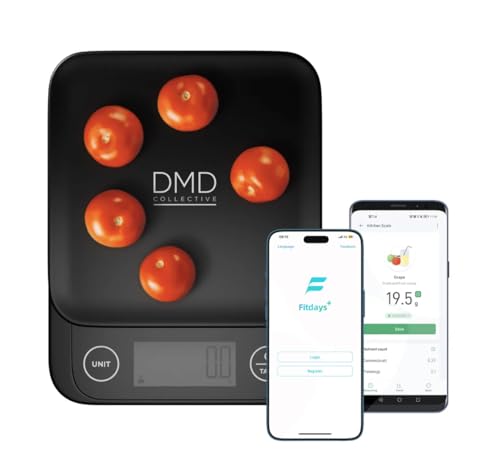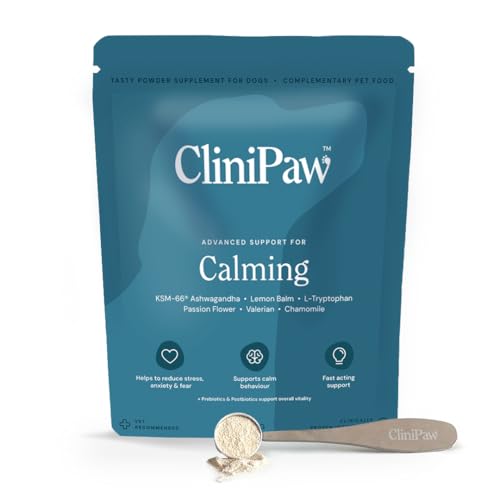
When you notice a gelatinous consistency in your pet’s excrement, accompanied by traces of crimson, immediate action is warranted. This combination can indicate several health issues, some of which require prompt veterinary attention. It is essential to monitor your furry friend closely and seek professional advice if symptoms persist.
Common causes of this alarming occurrence include dietary indiscretion, infections, or underlying gastrointestinal disorders. For instance, sudden changes in diet can lead to digestive upset, resulting in abnormal stool. Consider what your companion has ingested recently, and if there’s a pattern of unusual eating habits, it may be time to consult a vet.
In addition to diet, parasites can also contribute to such symptoms. Regular deworming and ensuring your pet is on appropriate preventive care can significantly reduce the risk. If you suspect an infestation, a faecal examination might be necessary for accurate diagnosis and treatment.
Moreover, if your canine exhibits other signs like lethargy, vomiting, or loss of appetite, do not delay in reaching out to a veterinary professional. These symptoms can indicate a more serious condition, necessitating immediate medical intervention.
Maintaining a close eye on your companion’s health and hygiene plays a vital role in early detection of potential issues. Regular vet check-ups, a balanced diet, and careful observation of any changes in behaviour will help ensure your furry friend remains healthy and happy.
Immediate Actions for Mucus-Laden Stool with Red Hue
If you notice a slimy, red-tinged excrement, seek veterinary assistance without delay. This condition can be a sign of serious health issues, including infection or inflammation in the gastrointestinal tract. A vet will thoroughly assess symptoms and may conduct diagnostic tests to determine the underlying cause.
While waiting for your appointment, monitor your pet’s behaviour. Check for vomiting, lethargy, or changes in appetite. Keep track of any recent dietary changes or exposure to potential toxins. This information can be invaluable for the veterinarian.
Hydration is key. Ensure your furry companion has access to fresh water at all times. Dehydration can exacerbate health issues, particularly if gastrointestinal distress is present.
If your pet is experiencing mild discomfort, consider offering a bland diet. Cooked rice and boiled chicken can be gentle on the stomach. Avoid fatty foods and treats until the situation improves.
While researching potential remedies, I stumbled upon various products, including the best chinese pcp air compressor, which made me realise how important it is to have reliable tools for various needs, including pet care. However, remember that no home remedy should replace professional veterinary advice.
Lastly, prevention is better than cure. Regular vet check-ups and vaccinations help keep your pet healthy. Always be cautious about what they eat, as foreign objects or spoiled food can lead to gastrointestinal issues.
Identifying Signs of Jelly-Like Stool in Canines
Observe for the consistency and appearance of faeces. If you notice a gelatinous texture, it could indicate underlying health issues. Take note of any accompanying symptoms such as lethargy, vomiting, or changes in appetite. These signs can provide valuable information for your veterinarian.
Key Indicators
| Indicator | Description |
|---|---|
| Colour Variations | Shades ranging from bright red to dark maroon can suggest bleeding in the gastrointestinal tract. |
| Consistency | A slimy or mucus-like coating may signify inflammation or infection. |
| Frequency | Increased urgency or frequency of defecation may indicate digestive distress. |
| Accompanying Symptoms | Monitor for additional signs such as discomfort, excessive thirst, or abnormal behaviour. |
What to Do Next
If you observe these signs, consult a veterinarian promptly. They can conduct necessary examinations and tests to determine the underlying cause. Early intervention is key to managing potential health concerns effectively.
Common causes of haemorrhage in canine faeces
Identifying the source of haemorrhage in your pet’s excrement is crucial for timely intervention. Here are some prevalent reasons for this concerning symptom:
- Parasites: Intestinal worms, such as hookworms or whipworms, can cause irritation and lead to bleeding.
- Infections: Bacterial or viral infections, including parvovirus or salmonella, may result in gastrointestinal inflammation and bloody discharge.
- Allergies: Food sensitivities can trigger inflammation in the digestive tract, leading to bleeding.
- Injuries: Trauma to the intestinal lining from foreign objects can cause lacerations, resulting in noticeable bleeding.
- Colitis: Inflammation of the colon can produce mucus and blood, often accompanied by diarrhoea.
- Tumours: Benign or malignant growths in the gastrointestinal tract may bleed, necessitating veterinary evaluation.
- Clotting disorders: Conditions affecting blood clotting can lead to spontaneous bleeding in various locations, including the gut.
Monitoring your dog’s overall health and behaviour is essential. If you observe any signs of distress, consult a veterinarian immediately for a thorough examination and appropriate treatment.
When to Seek Veterinary Attention
If you notice unusual stool that has a jelly-like consistency and includes traces of red, it’s time to consult a veterinarian. Acting quickly can be crucial. Any presence of mucus or blood indicates an underlying issue that requires professional evaluation.
Signs that Require Immediate Care
Look out for additional symptoms such as vomiting, lethargy, decreased appetite, or signs of pain. If your furry friend is straining to relieve themselves or shows discomfort, don’t hesitate to reach out to a veterinary clinic. These signs, combined with the stool appearance, can indicate a more serious condition.
Follow-Up and Monitoring
Even if your pet seems stable, ongoing monitoring is advisable. Keep track of any changes in behaviour or bathroom habits. Documenting these changes can help your vet diagnose the issue more effectively. Always err on the side of caution; your companion’s health should be the priority.
Dietary factors affecting your canine’s stool consistency
Adjusting your pet’s nutrition can significantly influence the texture and appearance of their excrement. Here are key dietary components to consider:
- Fibre content: A balanced ratio of soluble and insoluble fibre is crucial. Soluble fibre, found in oats and pumpkin, aids in moisture retention, while insoluble fibre from vegetables and whole grains promotes bulk. Too little fibre can lead to loose stools, while too much can cause constipation.
- Protein sources: High-quality proteins from chicken, beef, or fish are preferable. Low-grade or overly processed protein can lead to digestive issues, resulting in unusual stool characteristics.
- Fat levels: Healthy fats, such as omega-3 and omega-6 fatty acids from fish oils or flaxseed, support digestive health. However, excessive fat can lead to grease-like stools or digestive distress.
- Grain inclusions: Some pets may have sensitivities to specific grains. Monitoring any changes after introducing or eliminating grains can reveal intolerances that impact stool consistency.
- Treats and snacks: Consider the quality of treats offered. Low-quality snacks may contain fillers that disrupt digestion. Opt for natural, high-quality options to maintain regularity.
Monitoring your companion’s reactions to dietary changes will provide insights into what suits them best. Regular adjustments and observations can help maintain healthy bowel movements.
Understanding Intestinal Parasites and Infections
Regularly monitoring your pet for signs of intestinal parasites and infections is crucial. These unwanted guests can disrupt digestive health, leading to concerning symptoms. If you notice a change in stool consistency or appearance, consider the possibility of parasitic infestations. Common parasites include roundworms, hookworms, and giardia, all of which can cause severe gastrointestinal upset.
Recognising Symptoms
Infections often manifest through various indicators. Watch for lethargy, weight loss, or changes in appetite. Diarrhoea is a common symptom, sometimes accompanied by mucus or pus. If your furry friend is straining to eliminate or has an unusual odour, these could be signs of a deeper issue. Routine faecal examinations by a veterinarian can help identify these invaders early, preventing further complications.
Prevention and Treatment
Maintaining a regular deworming schedule is essential. Consult your vet about the best products suited for your pet’s age and lifestyle. Ensure that your companion has access to clean water and a nutritious diet, as these factors can significantly impact immunity and overall health. If you suspect an infection, prompt veterinary care is vital for effective treatment and recovery.
Understanding the potential for intestinal issues empowers you to take proactive steps in safeguarding your pet’s health, ensuring they lead a happy and active life.
Impact of Stress and Anxiety on Your Canine’s Digestion
Reducing stress in your furry friend can significantly improve their digestive health. When anxiety levels rise, it can lead to gastrointestinal issues, manifesting in unusual stool consistency. For instance, an anxious pet might experience changes in their gut flora, resulting in slimy or inconsistent excrement.
Recognising Stress Triggers
Identifying what causes your canine to feel overwhelmed is crucial. Common triggers include loud noises, changes in routine, or the introduction of new pets. Observing their behaviour during these moments can help pinpoint stressors. Once identified, implementing calming techniques, such as providing a safe space or engaging in gentle exercise, can alleviate anxiety and promote better digestion.
Behavioural Changes and Their Effects
Anxious behaviours, such as excessive barking or pacing, can signal distress. These behaviours can disrupt normal eating patterns, leading to irregularities in bowel movements. Regularly monitoring your pet’s response to stressful situations allows for early intervention. If you notice a pattern of stress-related digestive issues, consulting a veterinarian can provide tailored strategies to help manage their anxiety and improve their overall well-being.
Preventative measures for maintaining healthy stool
Regular vet check-ups are key to avoiding gastrointestinal issues. Annual wellness exams can help catch health concerns early, ensuring your companion stays in top shape.
Quality nutrition
Investing in high-quality food tailored to your pet’s age and health needs is crucial. Focus on a balanced diet rich in fibre, which aids digestion and promotes firm waste. Avoid sudden dietary changes; introduce new foods gradually to prevent upset stomach.
Hydration and exercise
Ensure your furry friend has constant access to fresh water. Dehydration can lead to softer stools. Regular walks or playtime keeps their system functioning well and reduces stress, which may impact digestion. If you notice any unusual behaviours, such as flipping their bowl, check out this resource for insights.






